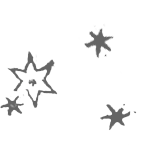Geology
Geology
Exhibit items on the subject of geology.
Exhibit Items
| 0 |
Researches on the Fossil Bones of Quadrupeds Cuvier, Georges (1812) |
|
| 1 |
On the Art of Fire Biringuccio, Vannoccio (1540) When Galileo needed to purchase plates of brass to make his engineering compass or commissioned glass to make better lenses, metalsmith, assayers and craftsmen in Venice employed operations similar to those described in Birunguccio’s metallurgical manual. |
|
| 1 |
A New Natural History of the Plants, Animals and Minerals of Mexico Hernandez, Francisco (1651) Publication of this work was widely anticipated as a guide to the “fountain of youth.” Hernandez enjoyed the reputation of being the “Pliny of the New World.” The result transformed Old World natural history. |
 |
| 2 |
On the Two Worlds, namely the Major and the Minor Fludd, Robert (1617-1621) For Robert Fludd, the universe is a monochord, its physical structure unintelligible without an understanding of music. In another section of the book, Fludd depicts the universe as a Temple of Music. |
 |
| 2 |
On the Nature of Metals Agricola, Georg (1556) Agricola described early modern mining and metallurgy practices throughout the German speaking areas of Europe. The remarkable illustrations make this work a paramount example of how abundant visual representations in the Printing Revolution transformed science and technology. |
|
| 2 |
Meteorology, 1556 Aristotle, (1556) In a discussion of optical effects of the atmosphere, Aristotle here addresses the formation of a halo around the Moon. This is one of the most interesting uses of mathematics in all of Aristotle’s writings. |
|
| 4 |
Studies on Glaciers Agassiz, Louis (1840) In 1840, Agassiz introduced a radical element of contingency into geohistory, contrary to then widespread assumptions of uninterrupted gradual cooling. |
 |
| 4 |
Pliny, “Natural History” Pliny the Elder, (1601) Pliny’s Natural History defined the scope and breadth of the field of natural history. Natural history meant the description (or “historia”) of nature, as opposed to explaining its causes (or “natural philosophy”). Pliny died in 79 CE while investigating the eruption of Mt. |
|
| 5 |
Revolutions of the Sea Adhémar, Joseph Alphonse (1842) Accepting Agassiz’ theory of the Ice Age, Adhémar proposed that an astronomical cycle – the precession of the equinoxes – affects the melting of polar ice caps and thereby may lead to a catastrophic rise in sea level around the globe. |
|
| 5 |
On the Snowflake, or the Six-Angled Crystal Kepler, Johann (1611) Kepler’s contributions reached far beyond the realm of astronomy, to meteorology, mathematics, geology, mineralogy and crystallography. Kepler published this 24-page pamphlet, a study of the snowflake, as a New Year’s greeting for a friend. |
 |
| 5 |
Phosphorescent Rock, or, On the Light of the Bolognese Stone Liceti, Fortunio (1640) Galileo studied the “Stone of Bologna” or “solar sponge,” produced by alchemists from calcining spar (barium sulfide), which glows in the dark. Galileo inferred from its cool luminescence that light is not the same as heat, but a distinct entity, contra Aristotle. |
 |
| 5 |
Natural Questions Seneca, (1522) Seneca’s Natural Questions covered a similar scope of subject matter as Aristotle’s Meteorology. Seneca differed from Aristotle by insisting that even sublunar phenomena follow the same natural laws and have the same intelligibility as the rest of the universe. |
|
| 6 |
Dissection of the Head of a Shark Steno, Niels (1667) In an appendix to an anatomical work, written for Ferdinand Medici II, Grand Duke of Tuscany, Steno recounted his dissection of the head of a shark that recently had washed ashore. |
|
| 7 |
Essay on the Mineral Geography of the Paris Basin Cuvier, Georges (1810) Brongniart and Cuvier showed how fossils were the key to unravelling the order of the strata in the Paris basin. Their fieldwork discoveries and anatomical reconstructions of fossils of large quadrupeds demonstrated the existence of former, pre-human worlds. |
|
| 7 |
Treatise on Fossil Mineral Wood Stelluti, Francesco (1637) The Academy of the Lynx emblem appears prominently on this title page. Although Stelluti once believed that fossils resembling wood originated from buried tree trunks, Cesi persuaded him otherwise. |
|
| 8 |
On the Transformations of the Atmosphere Porta, Giambattista della (1610) Della Porta dedicated several books to Cesi. Cesi underwrote publication of this book on meteorology, which includes wide-ranging discussions of water, earthquakes and meteorites. The title page displays Cesi’s coat of arms. |
|
| 11 |
Subterranean World Kircher, Athanasius (1665) This is one of two richly-embellished global sections which depict Kircher’s vision of interlaced systems of air, fire, and water around and within the Earth. |
 |
| 11 |
Anatomical Observations Steno, Nicolaus (1662) Stensen’s duct, by a founder of geology: Steno, a physician who worked for Ferdinand II de Medici in Florence, is known to generations of geologists as the founder of stratigraphy and an early advocate of the organic origin of fossils. |
|
| 12 |
Theory of the Earth, vol. 1 Burnet, Thomas (1684) Thomas Burnet, a royal chaplain, classical scholar, and Cambridge Platonist, published Telluris theoria sacra in 1681. The famous frontispiece first appeared in this English edition. A circle of seven globes represents the Earth completing its journey through time. |
|
| 13 |
Theory of the Earth, vol. 2 Burnet, Thomas (1684) Thomas Burnet, a royal chaplain, classical scholar, and Cambridge Platonist, published Telluris theoria sacra in 1681. The famous frontispiece first appeared in this English edition. A circle of seven globes represents the Earth completing its journey through time. |
|
| 13 |
On the Magnet Gilbert, William (1600) Gilbert, a physician to Queen Elisabeth I, wrote the first experimental treatise devoted to magnetism. Gilbert discerned analogies between the Earth and magnets, and reasoned that the Earth itself is a magnet. |
 |
| 14 |
Biblical Sciences Scheuchzer, Johann Jakob (1728) Biblical accounts of the creation week, deluge, and future conflagration provided early modern naturalists with an idiom for exploring changes in the Earth over time. Scheuchzer was a leading Swiss naturalist and an advocate for the organic origin of fossils. |
|
| 15 |
The Origin of Continents and Oceans Wegener, Alfred (1924) This page reflects Wegener’s interest in temperature fluctuations and patterns of glaciation. The theory of continental drift developed from Wegener’s researches in Greenland as a meteorologist with an interest in polar climate. |
|
| 15 |
Illustrations of the Bible Hoet, Gerard (1728) Conventions of biblical illustration interacted with scientific investigation, each influencing and shaping the other. According to contemporary interpretations of the six days of creation, mountains formed on the 3rd day when the dry land was separated from the sea. |





